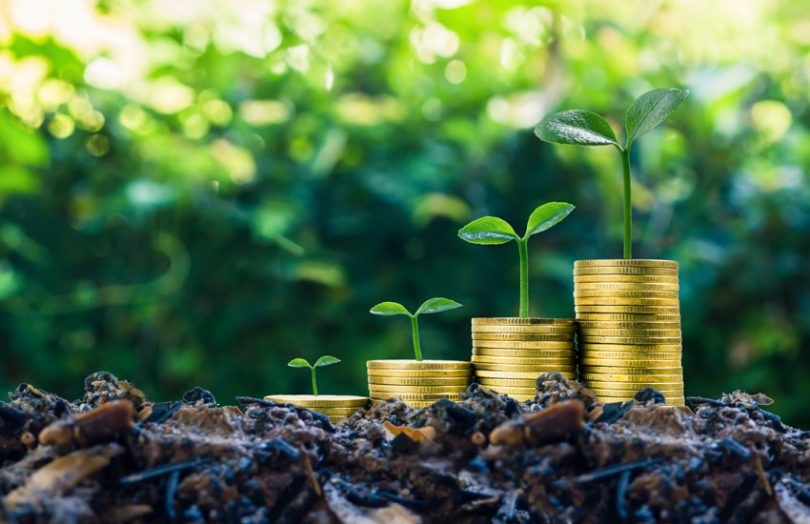Green bonds and other debt instruments geared toward sustainability are becoming an important part of global fixed income markets. More and more, investors look to align their portfolios with their financial goals and internationally recognized sustainability goals such as the Paris Agreement or UN Sustainable Development Goals (SDG).
Global concerns in the past two decades have been on climate change and the need to protect and sustain the environment. Across different sectors and various levels of global leadership, concerns have also been raised with some solutions proffered to address this issue as well as social challenges and poor corporate governance practices.
Key of the approaches in dealing with issues of climate change is the promotion of sustainable financing. Sustainable financing requires the need for businesses to modify their traditional models and modus operandi to incorporate ESG principles – environment, social, and governance.
Ghana’s Green and Social Bonds
Ghana has recognized Green Economy (GE) as an important vehicle for achieving the sustainable development of the country with some initiatives put in place to reform national fiscal policies for green finance. These initiatives are in line with national development priorities and global sustainability principles. UNEP Green Economy Initiative (GEI) (2012) defines GE as “one that results in improved human well-being and social equity, while significantly reducing environmental risks and ecological scarcities”.
In 2019, the Bank of Ghana launched the Sustainable Banking Principles and Sector Guidance Notes for the banking industry, while the Securities and Exchange Commission (SEC) also signed an agreement in May 2021 with the International Finance Corporation (IFC) for the development of a green bonds market in Ghana.
Indeed, the transition to green economy would need a significant amount of green finance. Green finance is defined as financial investment flow (from banking, micro-credit, insurance and investment) from the public, private and not-for-profit sectors to sustainable development projects and initiatives, and policies that encourage the development of a more sustainable economy.
The Government of Ghana signaled its intention to issue green and social bonds of up to US$2 billion by November 2021, which would make it the first African country to sell debt to fund development programs and refinance debt used for social and environmental projects and pay for education or health. Ghana already sold US$3.03 billion in March out of the US$5 billion for which it has budget approval. Out of the total debt issue, US$3.5 billion will be used to refinance debt already raised.
Ghana would be a pioneer of social bonds in Africa, seizing on an instrument that’s boomed since the coronavirus pandemic; the proceeds will be used to forge ahead with a free secondary-school initiative started in 2017 among other programs. Currently, only a few sovereigns have sold such bonds so far, including Chile and Ecuador.
Green Bonds Market in Ghana
Development of the green bonds market in Ghana will advance the country’s effort towards achieving the Sustainable Development Goals.
The partnership between International Finance Corporation (IFC) and the Securities and Exchange Commission (SEC) intends to facilitate investments in projects that address climate and environmental issues through green bonds. Under this agreement, IFC, a member of the World Bank Group, will help the SEC develop guidelines for issuers and investors in green bonds in Ghana.
The COVID-induced shock to public finances in most countries has weakened the chances of developing countries achieving all their SDGs by the target date of 2030. So, these green financing instruments are key to helping the country move towards that target. The introduction of green bonds will give investors opportunities to finance green buildings, clean transportation, renewable energy, sustainable water management, and other climate-friendly projects.
The market, when developed, will support Ghana’s transition to a lower-carbon future, as specified in the country’s agreed contributions under the Paris Climate Agreement.
According to Ghana’s intended nationally determined contribution (INDC) document, over a 10-year period, the country needs about US$22.6bn in investments from domestic and international public and private sources to finance its climate actions, starting from 2020.
Out of the total, US$9.81bn, representing 45 percent is needed for mitigation, whereas the remaining US$12.79bn will be required for adaptation.
The green bond market should provide diversity in investment securities and the investor base in the Ghanaian fixed income market, giving pension funds and other fund managers need an extra class of securities in their portfolios to reduce risk.

In the past decade, green bonds have increasingly emerged as a financing solution for environmentally friendly projects. As the timeline for achieving the sustainable development goals draws closer, it has become even more critical for Ghana to participate in this process. The SEC as the apex regulator of the capital market, has as part of its strategic efforts, plans to expand the range of investment products available in the Ghanaian market, to both local and international investors.
The Commission’s ten-year Capital Market Master Plan (CMMP) was built around a vision to develop a deep, efficient, and well-diversified capital market with a full range of products attractive to domestic and international investors. Pillar 1 under the CMMP specifically refers to creating a diversity of investment products and liquidity of securities markets. The development of the framework for the issuance of green bonds is in partial fulfillment of this pillar.
The IFC has considerable experience in the issuance of green bonds, having launched its Green Bond Program in 2010, which has helped catalyze the market and unlocked investment for private sector projects that support renewable energy and energy efficiency. IFC has issued roughly 170 green bonds in 20 currencies amounting to over US$10 billion.
Green Bonds
These bonds are devoted to financing new and existing projects or activities with positive environmental impacts. These impactful green bonds should be issued in line with the Green Bond Principles (GBP) from the International Capital Market Association (ICMA), a set of voluntary guidelines that promote more transparent, unified reporting on bonds’ environmental objectives and estimated impact. In fact, ICMA is relevant for green, social or sustainability-linked bonds, since ICMA provides guidelines for all forms of such bonds.
Cases of project categories eligible for green bond issuance include: renewable energy, energy efficiency, clean transportation, green buildings, wastewater management and climate change adaption.
Social Bonds
To qualify as a social bond, the proceeds must finance or refinance social projects or activities that achieve positive social outcomes and/or address a social issue. In many cases, social projects are aimed at target populations such as those living below the poverty line, marginalized communities, migrants, unemployed, women and/or sexual and gender minorities, people with disabilities, and displaced persons.
Similar to green bonds, issuance of social bonds is oriented by a set of voluntary guidelines – in this case the Social Bond Principles (SBP) from ICMA – aimed toward improved disclosure and transparency in the social bond market. The SBP outline best practices for issuing a social bond; they also arm investors with the information necessary to evaluate the social impact of their investments.
Recently, there is a new type of social bond emerging in the form of COVID-related bonds. These bonds have use of proceeds specifically aimed at mitigating COVID-19-related social issues and are particularly focused on the populations most impacted.
General instances of project categories eligible for social bonds include: food security and sustainable food systems, socioeconomic advancement, affordable housing, access to essential services, and affordable basic infrastructure. Social projects can include related and supporting expenditures such as research and development and, in situations where projects also have environmental benefits, issuers may determine classification as a social bond based on the primary objective of the underlying project.
Sustainability Bonds
Sustainability bonds are issues where proceeds are used to finance or re-finance a combination of green and social projects or activities. These bonds can be issued by companies, governments and municipalities, as well as for assets and projects and should follow the Sustainability Bond Guidelines from ICMA, which are aligned with both the GBP and SBP. They can be unsecured, backed by the creditworthiness of the corporate or government issuer, or secured with collateral on a specific asset.
Examples of project categories eligible for sustainability bonds include those in the green and social bonds categories.
Sustainability-linked Bonds
Sustainability-linked Bonds – such as key performance indicator (KPI)-linked or SDG-linked Bonds – are structurally linked to the issuer’s achievement of climate or broader SDG goals, such as through a covenant linking the coupon of a bond. In this case, progress, or lack thereof, toward the SDGs or selected KPIs then results in a decrease or increase in the instrument’s coupon. These bonds can play a key role in encouraging companies to make sustainability commitments at the corporate level, particularly through aligning to the UN SDGs or Paris Agreement.

About the Author
Ebenezer is an astute and driven business leader, organizational development specialist and economist with significant experience covering strategic planning, policy analysis, financial consulting, organisational development and business development.He is currently the Group Head and Lead Management Consultant at EKAM Group Ltd.










